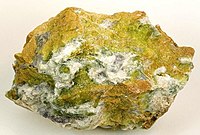Layered double hydroxides

Okay, imagine you are building a tower with different colored blocks. You start with a blue block, then a yellow block, then another blue block, and so on. Now imagine you want to add a special block in between the blue and yellow blocks that can do really cool things – like absorbing bad smells or cleaning up spilled juice. These special blocks are called "layered double hydroxides."
Layered double hydroxides look like small pieces of dirt or clay. They are made up of different layers, like the layers in a cake. Each layer is made up of tiny "bricks" called "sheets." And each sheet is made up of atoms, which are like the building blocks of the universe.
The special thing about layered double hydroxides is that they can trap other small things in between their layers. Imagine if you were a tiny ant, and you could crawl in between the layers of a cake. That's what it's like for other small things to get trapped in between the layers of layered double hydroxides.
Scientists like to use layered double hydroxides because they can use them to do cool things, like filtering water or making medicine. They can also change the color of layered double hydroxides by replacing some of the atoms in the layers with different types of atoms. This is kind of like changing the color of the blocks in your tower by using different colored legos.
So, in summary, layered double hydroxides are special blocks made up of layers and sheets of tiny building blocks called atoms. They can trap other small things in between their layers and are used by scientists to do cool things like filter water and make medicine.
Layered double hydroxides look like small pieces of dirt or clay. They are made up of different layers, like the layers in a cake. Each layer is made up of tiny "bricks" called "sheets." And each sheet is made up of atoms, which are like the building blocks of the universe.
The special thing about layered double hydroxides is that they can trap other small things in between their layers. Imagine if you were a tiny ant, and you could crawl in between the layers of a cake. That's what it's like for other small things to get trapped in between the layers of layered double hydroxides.
Scientists like to use layered double hydroxides because they can use them to do cool things, like filtering water or making medicine. They can also change the color of layered double hydroxides by replacing some of the atoms in the layers with different types of atoms. This is kind of like changing the color of the blocks in your tower by using different colored legos.
So, in summary, layered double hydroxides are special blocks made up of layers and sheets of tiny building blocks called atoms. They can trap other small things in between their layers and are used by scientists to do cool things like filter water and make medicine.
Related topics others have asked about:
